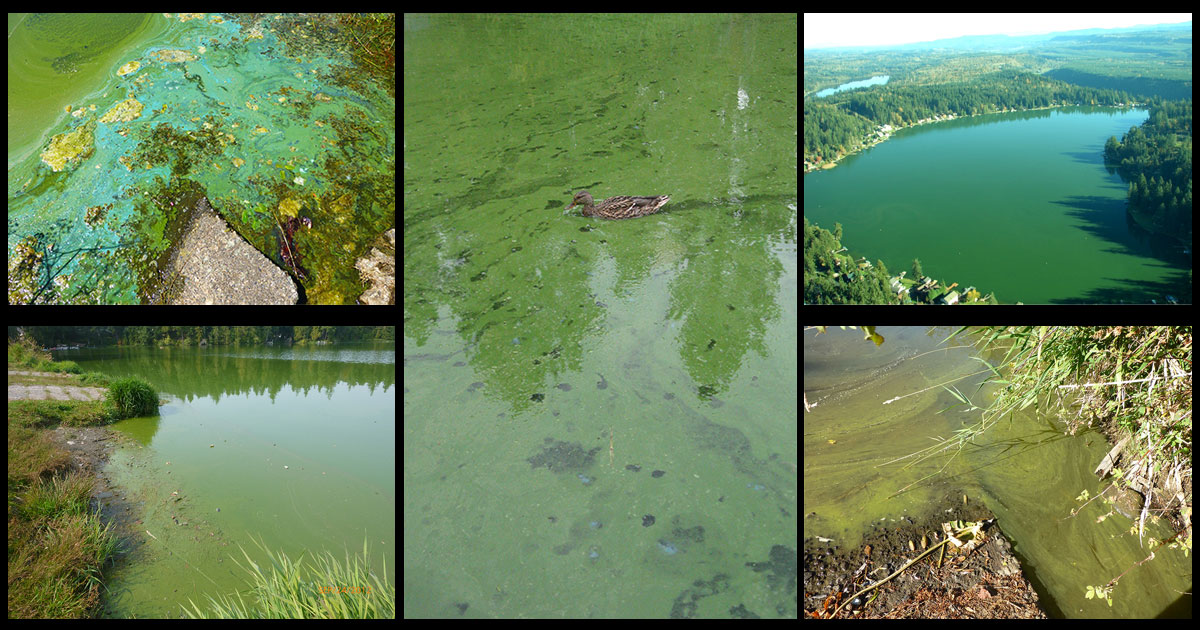Freshwater Algae Control Program
People and animals can become seriously ill, or even die, after exposure to toxic algae (cyanobacteria). Although not all blooms are toxic, toxicity is hard to predict and can only be detected by laboratory tests.
We fund a testing program for lake managers and residents to test if their freshwater algae samples are toxic. Also, we help advise local municipalities and health departments who manage lakes and administer a permit to control aquatic plants and algae.
For information or concerns about a current algae bloom please contact your local health department.
Toxic algae identification, monitoring, and reporting
The Washington State Toxic Algae website has test results from lakes and rivers that have participated in our program. We do not have toxicity results for all lakes and freshwater bodies in Washington. Because it can take time for us to get results on the website and some communities do their own testing, for the most up-to-date information please contact your local health department.
Visit the Washington Toxic Algae website to:
- Find your lake — Use our database or online map to locate a lake and see if it has been tested by our program.
- Report a bloom — Local jurisdictions, lake managers, and Washington residents can report an algae bloom and get approved to test for potential toxic algae.
- Learn more — Find out about the health risks and how to identify toxic algae.
Algae blooms may turn the water pea soup green, brownish, or even red. When algae blooms start decomposing, they can turn bright blue or white and are often reported as paint spills. See the Washington State Toxic Algae website for more information about how to identify an algae bloom.

Why is algae a problem?
Many types of algae are helpful and important for producing oxygen and food. However, some types of algae, called harmful algal blooms or cyanobacteria, produce toxins that can harm humans and animals. These harmful algae blooms are hard to predict, because certain types of algae do not always produce toxins. Also, it can change quickly, a bloom that tests non-toxic one day can become toxic the next.
In addition, algae can create several types of toxins that cause different symptoms. Health effects range from a mild skin rash to serious illness or in rare circumstances, death. Learn more about the effects of harmful algae blooms from the Environmental Protection Agency (EPA) webpage or the Washington State Department of Health webpage.
Grants
We provide small grants of up to $50,000 to state agencies, cities, counties, tribes, and special purpose districts to fund projects that prevent, remove, reduce, or manage excessive freshwater algae growth.
For more information about the requirements and eligibility, view our Freshwater Algae Program Grant guidelines and Freshwater Algae Program grants.
Stay informed
To receive toxicity reports about current freshwater algae blooms, join our email list.
For information or concerns about a current algae bloom, please contact your local Health Department.
Best management practices for lakes
Algae blooms can come from excess nutrients in the water. You can help keep local lakes healthy by taking the following steps:
- Maintain your septic system
- Manage waterfowl
- Use recommended landscape practices
- Control runoff and soil erosion
- Reduce or eliminate use of fertilizers
- Properly dispose of pet wastes
- Wash vehicles away from the lake
- Reduce or eliminate the use of pesticides
Related links
Contact information
Joseph Teresi
Aquatic Invasive & Algae Control grants manager
Joseph.Teresi@ecy.wa.gov

